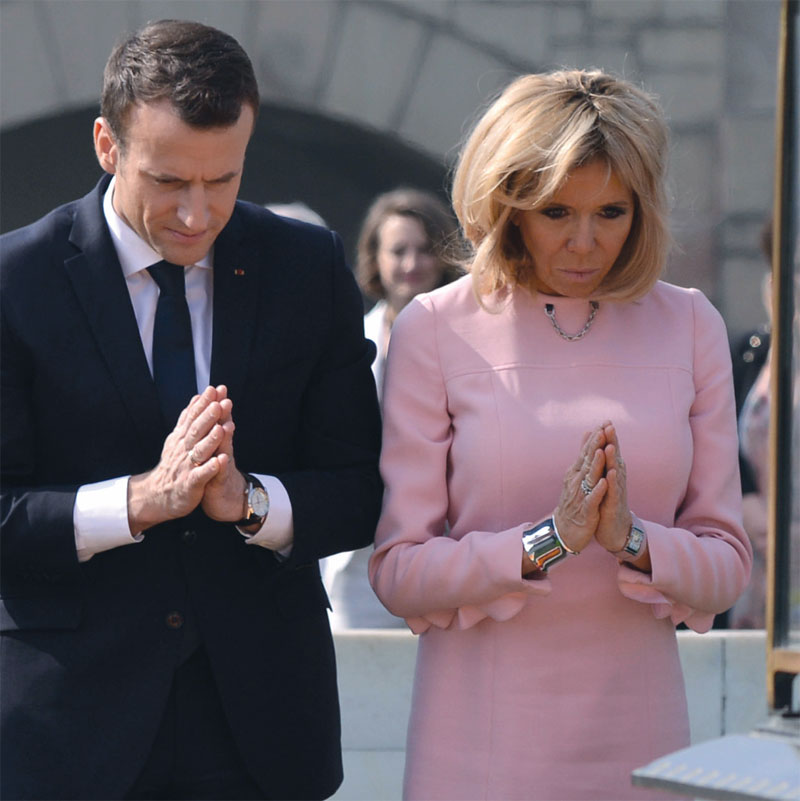Withstanding several challenges, Indo-French cooperation continues to grow
Smruti D
During the 2016 Republic Day parade, a foreign contingent for the first time marched down the Rajpath alongside the Indian Army. It was the French Army’s 35th Infantry Regiment and the Musical Infantry Regiment. That year, the chief guest for the parade was French President Francois Hollande.

The past few years have seen the Indo-French bonhomie grow. There are historical, cultural as well strategic reasons for this multi-sectoral growth, from the time bilateral relations between the two countries were first established. The French first came to India in 1673 and purchased land at Chandannagar in Bengal. In 1674, they took Pondicherry from the Sultan of Bijapur, which later became a French enclave. Even after the British took over most of India, including the Madras Presidency, France retained influence over Pondicherry, Karikal, Yanam, Mahe and Chandannagar. Even today, Pondicherry, now called Puducherry, recognises French as an official language.
Strategic Cooperation
India and France have been working with one another in a number of areas, ranging from art & culture (in January 2020, the two announced that they would work together in the field of museums, art research and festivals), energy, space, trade and defence. In defence, France is one of India’s key supplier of equipment, as well as partner. Even during the Cold War, Indo-French relationship remained an exception.
Writing in Carnegie International, C. Raja Mohan says, ‘Postcolonial India’s emphasis on strategic autonomy seemed to resonate with Gaullist France, which revelled in its independent foreign policy during the Cold War. In the early decades after India’s independence, France emerged as an important partner in the high technology domain, making crucial contributions to India’s heavy water production and nuclear fast breeder reactor programme, as well as its rocket programme, especially powerful liquid-fuel engines. France also became a major defence partner in the early 1980s, as India began to diversify the sources of its military hardware and decrease reliance on the Soviet Union. Among other hardware, France has supplied Mirage fighter aircraft, Scorpene submarines, and Rafale fighter jets.’
France was one of the earliest powers, with which India signed the strategic partnership agreement, way back in January 1998, during President Jacques Chirac’s visit. This was the consequence of France’s consistent support of India through the 1950s, when the US and UK had imposed wartime information censorship on atomic energy. The chairman of the French Atomic Energy Commission (CEA) Frédéric Joliot-Curie visited India in January 1950 and offered technical cooperation during a special meeting with the Indian Atomic Energy Commission (IAEC) in Delhi. Curie offered to share information on the purification of uranium, graphite reprocessing, and designs of a low power reactor in exchange for India’s export to France of thorium, beryllium, and uranium.
The following year, the countries signed the bilateral agreement for the research and construction of beryllium-moderated reactors. By 1968, the two countries were on the same page regarding most international issues. This included the Nuclear Non-Proliferation Treaty (NPT), which neither India nor France signed, deeming it discriminatory.
In 1974, when India conducted its first nuclear test, inviting opprobrium from the US, Canada, Australia, Japan and the Soviet Union, France’s CEA congratulated India by calling it a ‘scientific feat’. In 1998, when India yet again carried out the nuclear tests, President Jacques Chirac visited India with a high-level delegation, opposing the US sanctions. After the 2008 NSG waiver to India, France became the first country to sign the civil nuclear agreement with New Delhi. Even when NSG ruled that it won’t allow supply of enrichment and reprocessing technology to countries that are non-signatories to the NPT, France stood by India, assuring that it would not affect their bilateral nuclear cooperation.
Today, France is looking to build six reactors of 1650 MW each at the 9,900 MW Jaitapur nuclear power plant in Ratnagiri, Maharashtra. France’s Energy company EDF in April submitted a binding techno-commercial offer to Nuclear Power Corporation of India (NPCIL) for building six reactors. The EDF included the detailed technical configuration of the reactors and comprehensive commercial terms and conditions for the supply of engineering studies and equipment for the six EPR reactors.
According to French ambassador to India, Emmanuel Lenain, this will be the world’s largest nuclear power project. However, this project has had its share of problems. Originally, the import of six nuclear European Pressurised Reactors (EPRs) was initiated by the UPA-led government. But the project made little to no progress due to concerns about the ‘economics and safety of the EPRs, local opposition, and the collapse of the initial French corporate partner, Areva.’ Overlooking these concerns, the Modi government has however decided to go ahead with the project.
Of the total 14 agreements signed between the two countries in 2018 in Delhi, a key pact was on reciprocal logistics support between the armed forces of India and France. This will facilitate the French and Indian armed forces to receive logistical support, supplies and services from each other during authorised port visits, joint exercises, joint training, humanitarian assistance and disaster relief efforts.
You must be logged in to view this content.

